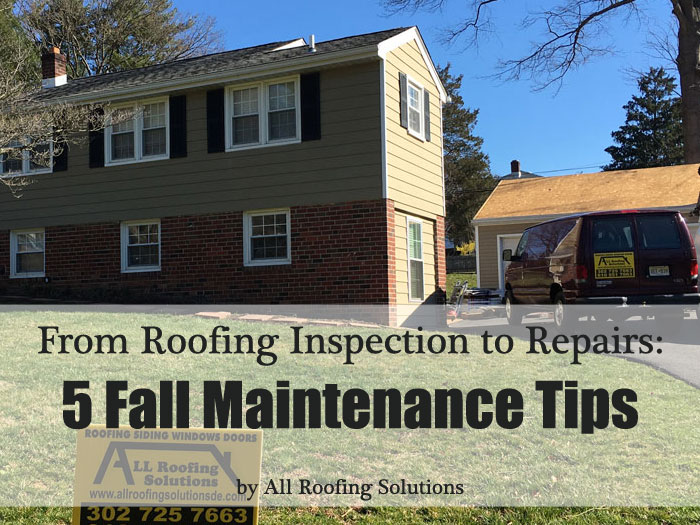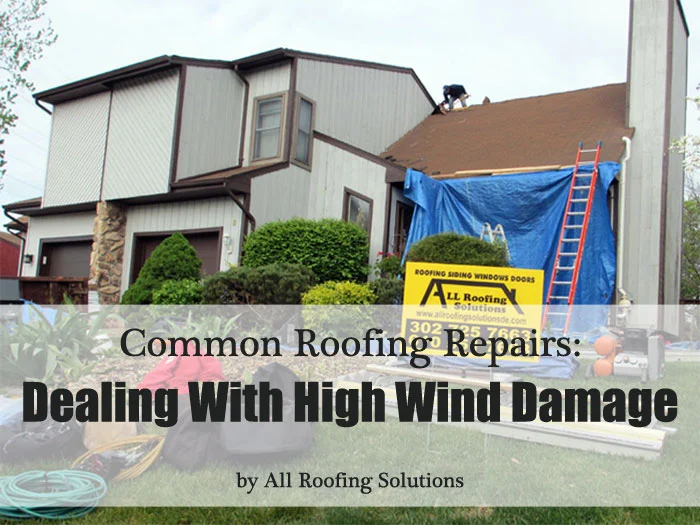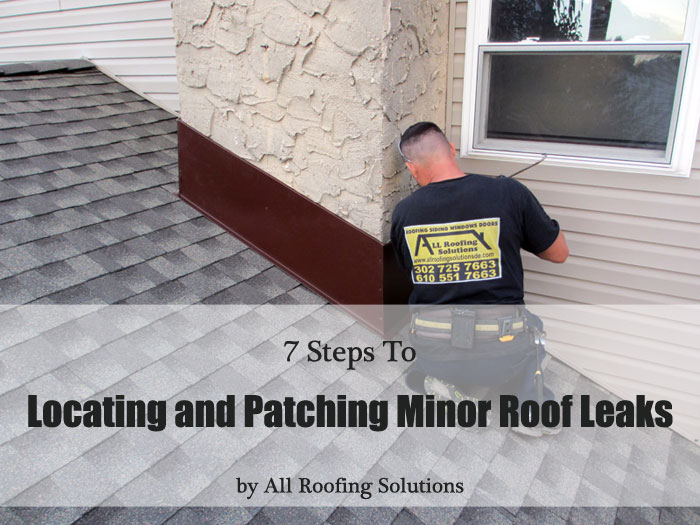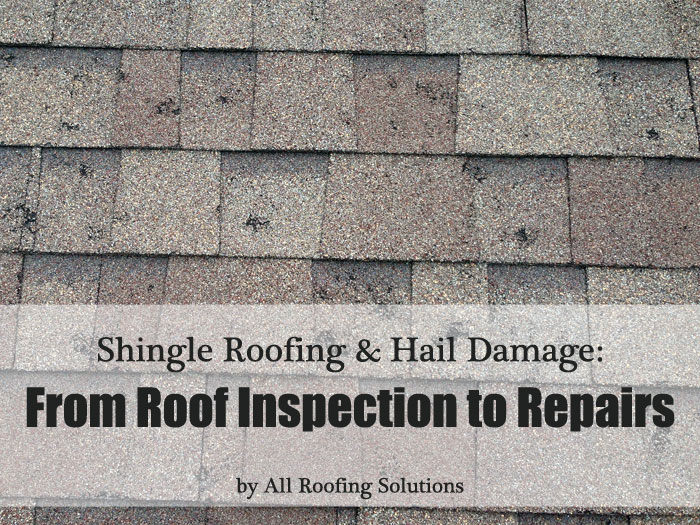Home maintenance experts point to fall as the year’s most important maintenance and repair seasons.
Winter can bring all kinds of unruly and unpredictable weather, and if your roof has any minor or undetected structural or repair problems, you run the risk of having them get out of control at the worst possible time. Harsh winter elements can easily turn small problems into big ones, so be proactive and ensure your roof is ready for the cold weather before it arrives.

From Roofing Inspection to Repairs: 5 Fall Maintenance Tips for Homeowners
These five key items should be on your fall roof maintenance checklist:
#1. Inspect, Clean & Fix Gutters
Gutters provide essential drainage, directing rainwater and melted snow and ice off your roof and safely away from your home. However, by the later part of autumn, chances are they need some cleaning. Falling leaves, sticks, twigs, branches, and all kinds of other debris can easily become trapped. If clogged gutters interferes with their proper function, you risk developing ice dams during the winter, and they are among the most notorious and costly problems a homeowner can face.
- Clear leaves & debris. Gutters and downspouts must be clear of leaves and debris to do their job. Clogged, dammed drain outlets lead to overflowing gutters, and may even pull the gutters loose. Avoid clogged gutters from forming in the first place by installing a gutter guard protection system, or grab a ladder and clear your regular gutters from all the accumulated debris, before fall rains start.
- Evaluate the gutter angle, making sloping adjustments as necessary. Properly installed rain gutters are slightly sloped toward the downspout, allowing water to drain efficiently. Improperly sloped gutters will result in pooling, which over time will rot or corrode your gutters. An easy way to test the slope is by spraying water into the rain gutters with a hose (do this only after cleaning your gutters to avoid potentially clogging it and making things worse). The water should flow smoothly toward the downspout. Additionally, improper location of downspouts, or not having enough of them, can lead to standing water and overflows during heavy rains.
- Inspect for gutters pulled away from the home. If water pools in your gutters for any reason, the weight of the water may, over time, loosen the fasteners and allow the gutter to pull away from your structure. To check the integrity of your gutter system, an annual inspection is recommended.
- Check for leaks and holes. Using a garden hose, spray water on your roof to see if your gutters are leaking. If you don’t have seamless gutters, your system may begin to leak at aging seams. These leaks may be repaired with silicone sealant. Be sure to seal both the inside and outside of the gutter. Small holes can be easily repaired with roofing cement, applied with a putty knife. Larger issues may require replacing the leaky section altogether.
- Inspect downspouts. Inspect your downspouts for any leaks or signs of excessive wear. If your downspouts are joined to fascia boards, ensure that they are firmly attached.
#2. Inspect & Repair Your Roof As Needed
During the fall, you should also make a careful and thorough check for any obvious signs of damage to your roof. Loose or missing shingles, loose roofing elements, cracks, blisters, chipped roofing cement…all of them should be dealt with before the first snowfall. Binoculars are your best friend if you don’t feel comfortable climbing a ladder onto your roof.
- Check for broken, cracked, curled, or missing shingles, and any signs of a loss of granulation. Loose or damaged shingles is a common problem. Over time, high winds, hail, tree branches and other debris can take a toll. Often, a little roofing cement may be all that’s needed to repair a loose shingle tab. If the shingle is damaged, you’ll want to have it replaced.
- Check for blisters, cracks, and tears around the edges of the roof
- Check flashings for damage, corrosion, or holes that may need repair or replacement.
- Inspect damaged chimney bricks and buckled or torn flashing, cracked or worn caps and joints. Check caulking/sealants around the roof for cracking or other damage. Old, worn sealants should be replaced before water seepage causes problems.
- Assess the condition of exhaust pipes, valleys, outer edges or angles where the roof meets the walls.
If your roofing inspection uncovers issues that require remediation, don’t wait until spring. Have them fixed now, before the snow starts to fall. Otherwise, you risk developing problems that may be far more difficult and expensive to repair later.
Bottom line: Patch any ongoing roof leaks, or hire a contractor to handle that for you. As you work on repairing your roof, remember to stay safe and take special care to not inflict further damage to your roof.
#3. Trim Trees That Hang Over Your Roof
If you have trees with branches that hang over your roof, it’s a good idea to trim these branches away to prevent leaves from falling onto your roof. The accumulation of leaves, branches, twigs, and other debris can cause blockages in your gutters, leading to ice dams and other potentially serious issues, as mentioned earlier.
This supplemental task serves multiple purposes. First, it eliminates some of the potential debris that could end up in your gutters as winter wears on. Second, and more importantly, it reduces your chances of suffering serious damage as the result of a winter storm. High winds and heavy snowfall accumulation can cause even large, sturdy branches to break off, and they can cause big problems if they land on your roof with a crash.
#4. Don’t Forget To Check The Attic
Some problems are less obvious, and you’ll need to track down clues that might be on the inside of your home rather than outside. Head up to your attic to check for signs of leaks. Check your attics and all walls and ceilings that adjoin your roof for signs of water damage, such as leaks or discolored splotches. The presence of mold and mildew, stains, and warped wooden elements all indicate leakage, or high humidity levels.
Proper attic insulation and ventilation are the keys to fixing these issues and preventing the serious problems they can cause. Be especially vigilant about mold – roof leaks can give moisture and mold a way to get a foothold inside your house.
#5. Make a list
Keep a comprehensive record of any possible problems you find. This will make it faster and easier for you to obtain and compare quotes from roofing contractors, should you decide to hire a professional to perform any necessary repairs.
If you encounter problems you don’t know how to repair on your own, reach out to a reputable local professional roofing contractor. Making an investment in proper repairs now can pay off in spades by helping you avoid more serious and more costly problems during the winter, when snowy and slippery conditions can make repairs difficult or impossible.
Have A Leak? Hire A Repair Contractor
A family owned & operated DE/PA roofing contractor, All Roofing Solutions has been serving Delaware and Pennsylvania for nearly 20 years! Whether you need help with inspection, maintenance or repairs, we’re ready to assist you!
To schedule your free consultation, call 302-725-ROOF (7663) in Delaware or 610-551-ROOF (7663) in Pennsylvania. Contact us today and receive a discount of 15% off any roofing repair job.




 Family-owned and operated contractor
Family-owned and operated contractor






